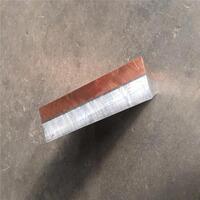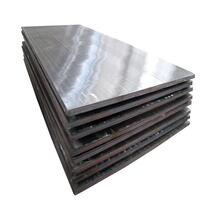1. Introduction
Just 24 hours ago, the world’s architecture community buzzed with news from Milan Design Week 2024, where Studio Libeskind unveiled a new pavilion featuring a dynamic titanium-clad facade that shifts color with sunlight. This cutting-edge use of clad metals exemplifies a growing trend: architects are increasingly turning to specialized metal clad solutions not just for looks, but for performance in extreme climates, sustainability goals, and urban resilience.

Gone are the days when ‘metal clad’ meant simple corrugated sheds or industrial warehouses. Today, clad metals—engineered composites like aluminum-clad stainless steel or copper-nickel clad—are driving innovation in everything from luxury residences to net-zero public buildings. Let’s dive into how these niche applications are redefining modern construction.
2. Beyond Basic Siding: The Rise of Performance-Oriented Metal Cladding
Metal clad isn’t just about wrapping a building in shiny sheets. At its core, clad metal meaning refers to layered materials—typically a structural base (like carbon steel) bonded to a corrosion-resistant or decorative surface (such as zinc, copper, or titanium). This hybrid approach delivers strength plus longevity.
For example, a steel clad house in coastal Norway might use aluminum-clad steel wire for grounding while sporting a zinc metal siding exterior. The aluminum layer prevents galvanic corrosion, while the zinc weathers gracefully into a protective patina—ideal for salty, humid air.
- Corten steel plate is prized for self-protecting rust layers, eliminating the need for painting.
- Zinc clad roof systems offer 80+ year lifespans with minimal maintenance.
- PAC CLAD standing seam roofs are now standard in LEED-certified projects for their recyclability and thermal performance.

3. Spotlight on Niche Architectural Applications
Designers are pushing boundaries with highly specific metal clad types. One standout is the zinc clad dormer—a small but critical element on pitched roofs that blends seamlessly with standing seam siding while resisting ice damming and UV degradation.
Another innovation is the use of vertical standing seam metal siding paired with PAC CLAD column covers and coping. These systems create monolithic steel facade appearances without the weight or cost of solid stainless plate. In downtown Toronto, a recent mixed-use tower used this combo alongside perforated plate accents for natural ventilation and visual rhythm.
Copper siding and corten steel facade elements are also gaining traction in high-end residential builds. Though corten siding cost runs higher than traditional options ($8–$15/sq.ft.), its zero-maintenance lifecycle offsets long-term expenses. Similarly, zinc facade panels age elegantly, shifting from bright silver to soft gray over a decade.
4. Technical Marvels: Alloy Clad and Composite Systems

Behind the scenes, engineers rely on advanced clad metals like 2024-T3 clad aluminum for structural brackets or inconel 625 weld overlay plates in high-stress zones. These aren’t your average metal sheets—they’re precision-engineered for thermal expansion, fire resistance, or chemical exposure.
Take aluminum-clad stainless steel: it merges the formability of aluminum with the hygiene and strength of 316L stainless steel plate—perfect for food processing facilities or hospital exteriors. Meanwhile, stainless clad aluminum reverses the layers for different thermal conductivity needs.
Even electrical systems benefit. Metal clad electrical wire—often aluminum clad steel wire or CU clad wire—is mandated in commercial builds in Pennsylvania and other states for its fire containment and mechanical protection, especially when routed through metal clad wall assemblies.
5. Sustainability and Future Trends
The green building movement is accelerating adoption of recyclable clad systems. Colorbond standing seam and PAC CLAD HWP (High-Performance) products contain up to 95% recycled content. Moreover, metal clad insulation wraps—like aluminum clad pipe insulation—reduce HVAC loads in large complexes.
Emerging materials include titanium alloy plate for seismic zones and magnesium plate composites for ultra-lightweight retrofits. And with laser-cut diamond plate sheet and checker plate metal sheet now available in custom alloys like 5083 aluminum plate, even aesthetic details serve functional roles—providing slip resistance on balconies or acoustic diffusion on facades.
6. Conclusion
From corten steel siding to titanium-clad showpieces, metal clad has evolved far beyond utilitarian coverings. Today’s clad metals merge artistry with engineering, offering architects unprecedented control over durability, sustainability, and form. As material science advances, expect even more exotic combinations—like nickel silver plate accents or electroless nickel-coated brass plates—to enter mainstream design. The future of building envelopes isn’t just metal—it’s intelligently clad.
Our Website founded on October 17, 2012, is a high-tech enterprise committed to the research and development, production, processing, sales and technical services of ceramic relative materials such as Metal. Our products includes but not limited to Boron Carbide Ceramic Products, Boron Nitride Ceramic Products, Silicon Carbide Ceramic Products, Silicon Nitride Ceramic Products, Zirconium Dioxide Ceramic Products, etc. If you are interested, please feel free to contact us.
